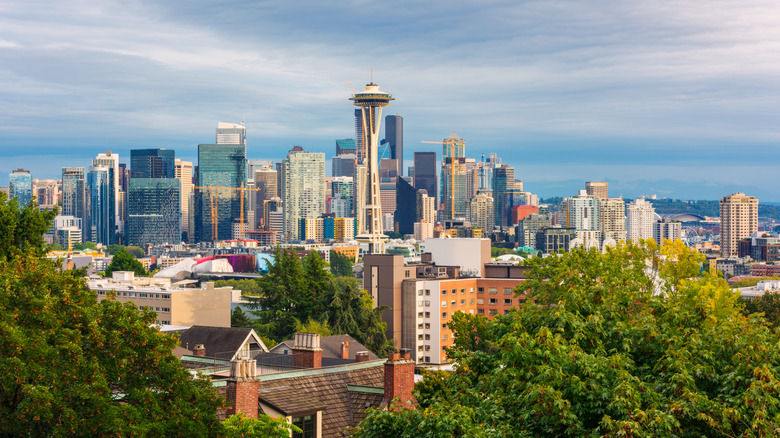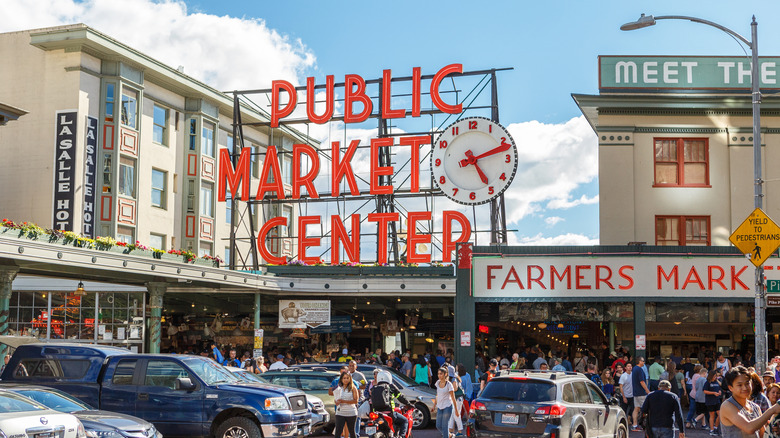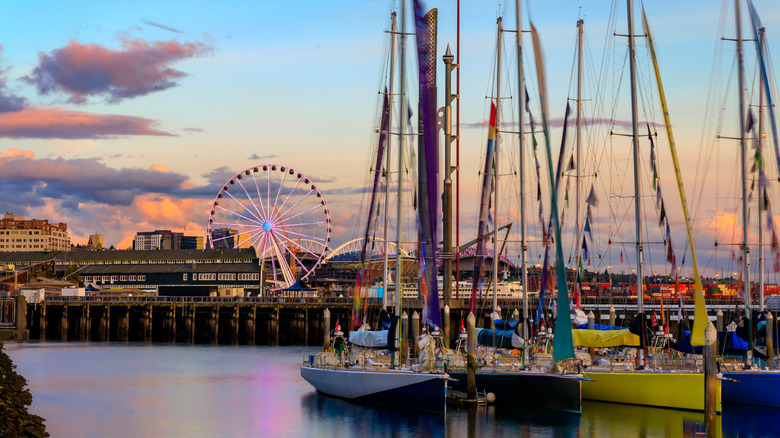Seattle Gets Less Rain Than Miami, So Why Does The Emerald City Feel So Gloomy?
Rainy, gloomy Seattle — at least that's the stereotype. But it turns out that this universal image of the city isn't completely accurate: When you look at the numbers, Seattle doesn't even make it into the top one hundred rainiest cities in the United States, according to the National Centers for Environmental Information. The rainiest city in the country is actually Mount Washington, New Hampshire, followed by Astoria, Oregon; Mobile, Alabama; and Miami, Florida. Ironically, the latter has a reputation for being warm and sunny, with tourists flocking there year after year in search of a never-ending summer. The data, however, paints a different picture. While the mean precipitation from 1991 to 2020 was 39.42 inches for the Emerald City, the Magic City had 66.31 inches — that's 1.7 times higher!
If this is the case, why does Seattle get labeled as a gray city? Although the city gets milder showers, it rains an average of 149 days of the year, compared with Miami's 135. Still, that's not a big enough difference to create the opposite ideas we have of both cities. The main factor that sets them apart isn't actually rain, but sunshine. Miami may get very heavy rainfalls due to hurricanes and tropical storms, but it also has an average of 249 days of total or partial sunshine. On the other hand, Seattle only enjoys 164 days of sunny weather each year.
Is gloomy Seattle worth visiting?
Because of its gloomy reputation, Seattle is sometimes overlooked by travelers. This is a huge mistake, since the West Coast city is an incredibly exciting destination that is surrounded by nature, with urban green spaces within the city limits and Mount Rainier National Park less than 2 hours away from downtown. The waterfront is also home to orcas and other whale species that pass through Puget Sound on their yearly migration. As if this weren't enough, Seattle is one of the best food cities in the U.S., with great coffee and a large immigrant population that guarantees variety and innovation in the culinary scene.
If it does rain, there are plenty of cool things to do indoors. For instance, you can walk around the famous Pike Place Market, which many describe as the soul of Seattle. Or you can do a cool tour under Seattle's streets that'll take you to hidden places and let you in on the city's myths and secrets. As the birthplace of musical genres like grunge, this destination always has great live music. If the weather is bringing you down, just go into a bar or venue that showcases local talent and you'll likely forget all about the rain.
Planning an incredible visit to Seattle
Although Seattle is always worth visiting, there's no denying that winter can be particularly gloomy. From November through January, visitors can expect only four sunny days out of 92. If possible, plan your trip from late May to early September, when you're more likely to enjoy pleasant weather. During these months, Seattle also offers public transportation to several nearby outdoors destinations, making it easy to go on hikes and enjoy nature without worrying about driving or finding parking.
For accommodations, consider the bio-inspired Populus Seattle, the nation's second carbon-positive hotel. This sustainable property features luxurious rooms that feel like you're in a modern cabin in the woods, along with a trendy rooftop bar and a high-end restaurant where open-flame cooking dominates. For a chic yet affordable stay, look into citizenM Seattle South Lake Union, located near top attractions like the Space Needle and Pike Place Market. The property is also eco-friendly and decorated with pieces by local artists.
No matter when you go or where you stay, pack a light but fashionable rain coat or a small umbrella. That way, you'll be prepared for whatever weather this overcast but not-as-rainy-as-you'd-think city brings.


